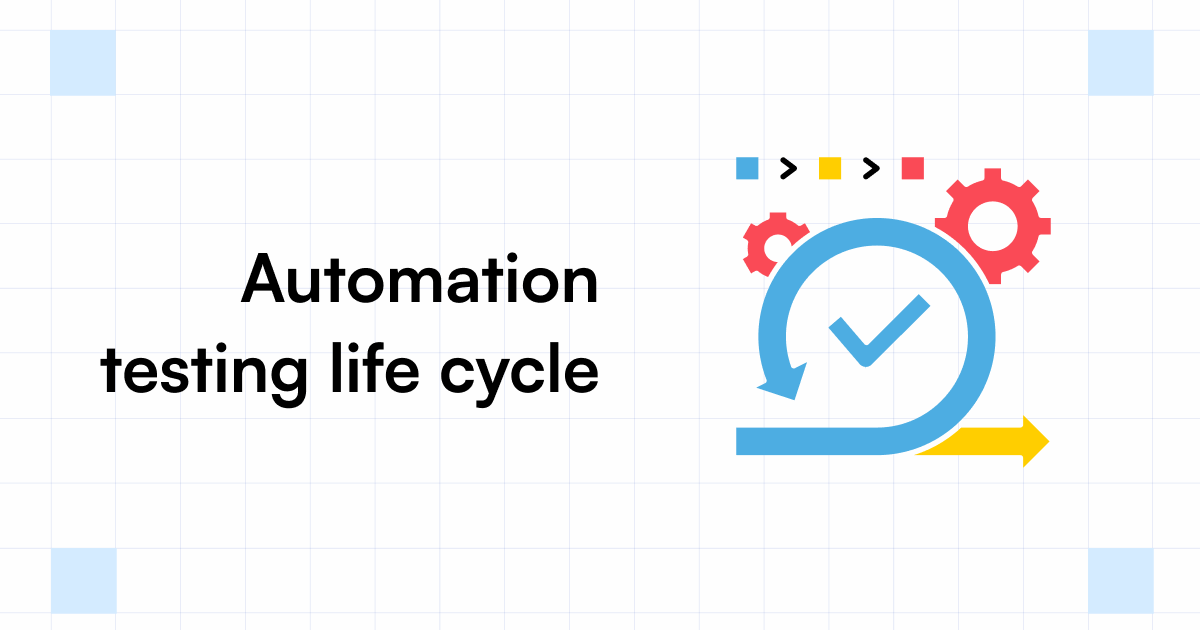The Best Guide to Implementing Automation Testing Efficiently
The Best Guide to Implementing Automation Testing Efficiently
Blog Article
Guaranteeing Success in Automation Examining: Key Metrics, Obstacles, and Solutions Every QA Team Need To Know
In the world of software program quality control, the landscape of automation screening is ever-evolving, demanding a thorough strategy to ensure seamless procedures. Key metrics offer as the compass directing QA groups via the vast terrain of test automation, shedding light on progress and locations for improvement. Nevertheless, challenges loom big, typically casting darkness on the path to success. By recognizing these difficulties and carrying out reliable services, QA groups can navigate via intricacies with skill. The journey to understanding automation testing is led with nuances that require a keen eye for tracking, analysis, and continuous improvement. automation testing. As the industry propels onward, the mission for optimal efficiency in automation screening continues to be a consistent search, urging QA groups to outfit themselves with the expertise and strategies essential for victory.
Significance of Secret Metrics
Understanding the importance of key metrics is essential for assessing the efficiency and performance of automation screening processes. Key metrics act as measurable procedures that provide valuable understandings into different facets of the screening process, such as test protection, examination implementation time, defect thickness, and examination situation efficiency. By examining these metrics, QA groups can determine traffic jams, inefficiencies, and locations for improvement within their automation testing framework.
One critical aspect of vital metrics is their ability to track progression and keep an eye on the general health of the testing procedure (automation testing). They allow stakeholders to make educated decisions based on data-driven insights, which can bring about extra efficient screening approaches and far better source allowance. Additionally, crucial metrics can aid teams established practical goals, determine the success of automation campaigns, and demonstrate the ROI of automation testing initiatives

Common Obstacles Faced
Challenges commonly experienced in automation screening procedures can substantially impact the overall performance and effectiveness of QA teams. Among the major obstacles is the selection of the best examination instances for automation. Not all examination instances appropriate for automation, and choosing the wrong ones can lead to thrown away time and sources. Furthermore, preserving test scripts can be a difficult task, especially as the application undergoes frequent modifications. Examination manuscript upkeep needs continual updates and adjustments to ensure they show the current performance properly. Another usual obstacle is the preliminary investment required for establishing up automation frameworks and devices. This can be an obstacle for some organizations, particularly smaller ones with limited spending plans. Moreover, automation screening may not cover all elements of screening, such as use and user experience screening, which still require manual treatment. Getting over these challenges calls for appropriate planning, calculated examination case option, durable upkeep procedures, adequate resources, and a clear understanding of the constraints of automation testing.
Reliable Solutions for Obstacles
To address the obstacles come across in automation testing, implementing reliable remedies is important for improving the efficiency and efficiency of QA groups. One essential service is to buy durable training programs for QA groups to guarantee they have the essential abilities to effectively use automation devices. Training can connect knowledge spaces, improve understanding of automation frameworks, and enhance scripting capacities, eventually causing extra efficient test creation and execution.
Another important service is to develop clear interaction networks within the QA group and with various other stakeholders, such as programmers and task supervisors. Efficient interaction assists in straightening assumptions, sharing development updates, and quickly resolving concerns or obstacles that may emerge during the automation testing process.

Surveillance and Evaluation Methods
Executing effective monitoring and evaluation techniques is crucial for making certain the success and performance of automation testing processes. By utilizing surveillance tools, QA groups can track the efficiency of test scripts, identify bottlenecks, and determine areas for improvement. Real-time monitoring enables for fast detection of problems, allowing rapid feedback and resolution. In addition, assessing test results and metrics provides valuable insights into the high quality of the software being tested and the efficiency of the testing method.
One secret strategy in tracking and evaluation is using control panels that settle pertinent metrics and KPIs in an aesthetically easily accessible style. These control panels supply a thorough summary of examination implementation standing, examination coverage, issue patterns, and other crucial details. Routinely assessing and examining these dashboards can assist QA groups make educated decisions, prioritize jobs, and optimize screening efforts.
Furthermore, applying automated informs and alerts based on predefined thresholds can boost positive monitoring and timely treatment. By setting up alerts for performance inconsistencies or test failures, teams can attend to concerns without delay and click this link avoid them from intensifying. On the whole, monitoring and analysis strategies play an important function in making certain the effectiveness and success of automation testing efforts.
Continual Renovation Approaches
Enhancing the effectiveness of automation testing procedures necessitates the regular refinement of methodologies and approaches. Constant renovation strategies are critical for QA teams to adjust to progressing innovations and deliver top notch software. One key strategy to improving automation testing procedures is to conduct normal testimonials and retrospectives. By analyzing previous testing cycles, groups can recognize bottlenecks, ineffectiveness, and locations for improvement. Executing responses loops and integrating lessons found out right into future screening frameworks can yield substantial renovations over time.

Verdict
To conclude, it is essential for QA teams to understand the essential metrics, challenges, and services in automation screening to make certain success. By carefully checking and assessing data, implementing reliable options to typical obstacles, and continually enhancing methods, QA groups can optimize their screening procedures and provide high-quality software. Sticking to these methods will eventually cause a lot more reliable and effective automation screening methods.
By assessing these metrics, QA groups can determine traffic jams, inefficiencies, and locations for renovation within their automation testing structure.
In addition, vital metrics can aid groups set reasonable goals, measure the success of automation efforts, and show the ROI of automation my response screening efforts.
Challenges typically run into in automation screening processes can substantially influence the total efficiency and efficiency of QA teams. Automation screening may not cover all elements of screening, such as use and user experience testing, which still require Discover More Here hands-on treatment.In verdict, it is critical for QA teams to understand the vital metrics, challenges, and remedies in automation testing to ensure success.
Report this page